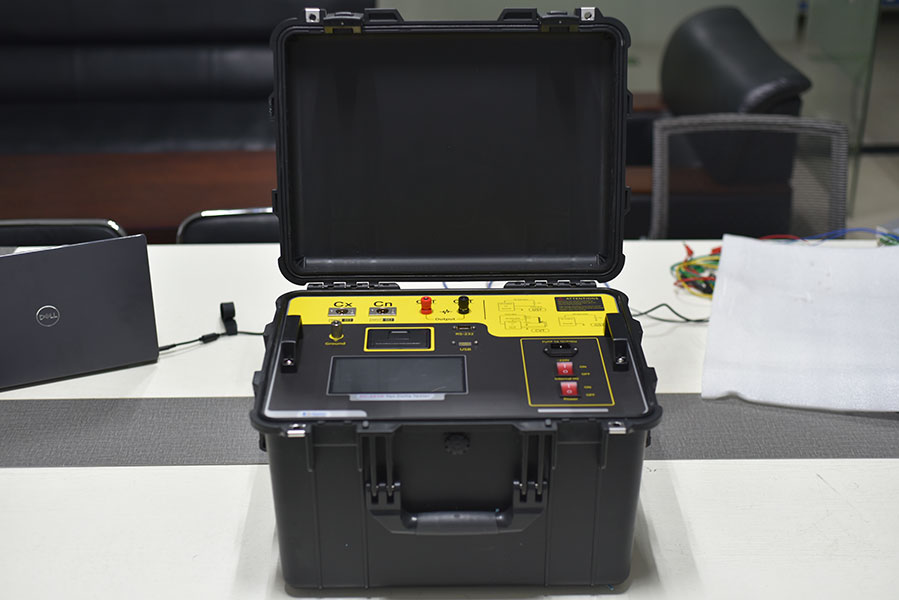Measuring the dielectric loss factor is a highly sensitive test item that can detect overall moisture and deterioration of the insulation of power equipment, as well as local cracks in the small volume of tested equipment that are connected or not connected. The test precautions for measuring the dielectric loss factor include:
1、Prevent workers from getting electrocuted. The tested equipment should be discharged to ground before and after the test. The metal shells of the testing instruments and the tested equipment should be reliably grounded, and the instrument operators must stand on insulation pads. Connect one end of the grounding wire to the grounding grid, and the other end reliably to the grounding bolt of the instrument panel. The grounding point of the grounding grid should have good conductivity.
2、To avoid errors caused by winding inductance and excitation losses during testing, it is necessary to short-circuit each phase of the test winding group, and short-circuit or shield each phase of the non tested winding during testing. Try to shorten the measurement leads as much as possible to reduce errors. When the test data exceeds the standard, factors such as surface contamination and environmental humidity of the test object should be considered. If necessary, the surface of the test object can be cleaned or dried before re measurement.
3、When the test data exceeds the standard, factors such as surface contamination and environmental humidity of the test object should be considered. If necessary, the surface of the test object can be cleaned or dried before re measurement.
4、When there is interference from electric and magnetic fields during on-site measurement, corresponding measures should be taken to eliminate them.
5、Selection of test voltage. For transformers with a rated voltage of 10kV or above, the applied voltage should be 10kV. For transformers with a rated voltage of 10k or below, the applied voltage should be the rated voltage of the winding.
6、Record the on-site temperature and air temperature during testing. The measurement temperature shall be based on the upper oil temperature of the transformer, and the temperature measured each time shall be as close as possible. And it should be measured when the upper oil temperature of the transformer is lower than sO ℃, and the tan8 value at different temperatures should be converted to the same temperature for comparison.
7、All winding terminals connected to the tested part are pressurized together, and the other winding terminals are grounded. Electromagnetic voltage transformers should adopt the end shield method.

ZC-221D fully-automatic anti-interference dielectric loss tester breaks through the traditional bridge testing method and adopts variable frequency power technology, single chip and modernized electrical technology to carry out automatic frequency shift, analog-to-digital conversion and data computing. It features strong anti-interference capacity, high test speed, high precision, automatic digitization and easy operation. It adopts high-power switching power supply, which outputs 45Hz and 55Hz pure sine wave and automatically increase the voltage to a maximum value 10 KV. It can filter 50Hz interference automatically, and it is applicable to the site test of substation and other places with large electromagnetic interference. This methods is extensively applied in dielectric loss measurement of transformer, mutual inductor, reactor, bushing, capacitor, arrester and others equipment in power industry.

Kvtester Electronics Technology Co.,Ltd. is a high-tech enterprise specializing in power testing, testing, research and development, production, and sales of testing equipment. It has been engaged in the electrical testing industry for many years, and its products are of high quality. We welcome customers to come and purchase.






